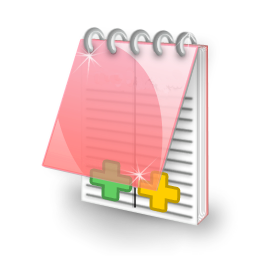 Operation and Maintenance
Operation and Maintenance Linux Operation and Maintenance
Linux Operation and Maintenance What are the C programming software on Linux?
What are the C programming software on Linux?C programming software on Linux includes: 1. eclipse, which can provide open source tools and environments for C and C programmers; 2. "Code::Blocks", which supports code compilation, debugging, code coverage, and analysis and automatic completion; 3. CodeLite, an open source cross-platform IDE; 4. NetBeans, etc.

#The operating environment of this tutorial: linux5.9.8 system, Dell G3 computer.
C/C is popular worldwide and indispensable in application and system development.
Decades have passed, C and C, as the main high-level programming languages, are still very popular around the world, and firmly occupy the top 5 of the TIOBE programming language rankings, applications and System development is inseparable from these two languages.
In this article, we will show you some programming software (IDE) for C/C that can be found on the Linux platform.
linux C programming software (IDE)
1) eclipse
Eclipse is the world’s most The most popular and powerful IDE. It provides open source tools and environments for C and C programmers. Beginners will find it very easy to get started using this IDE.

Features:
Freely available open source software.
Supports various platforms such as Windows, Linux, Mac OS X, etc.
Supports code debugging, compilation, analysis, automatic completion and reconstruction (code reorganization can be performed without changing the external operation).
Has a great Graphical User Interface (GUI) to arrange elements using drag and drop functionality.
Support static code analysis
2) Code::Blocks
Code::Blocks It is an open source, full-featured cross-platform C/C integrated development environment. This IDE contains all the features you need for C and C++ development.

Features:
Available for Windows, Linux and Mac OS X.
Fully customizable and scalable.
Supports code compilation, debugging, code coverage, analysis and automatic completion.
is a class browser. That is to say, it can visualize object-oriented programming.
Have features like Eclipse that allow you to use drag-and-drop functionality when arranging elements, and also support code analysis.
3) GNAT Programming Studio
GNAT Programming Studio, referred to as GPS, is a highly simplified interaction between software and developers. Advanced free IDE. GPS's natural interface makes it easy to use, simplifies the navigation of the source program, and also helps to highlight the basic ideas of the program.

Features:
Multi-platform support.
Supports code compilation, debugging, code coverage, analysis and automatic completion.
is also a class browser similar to Code:Blocks and also supports code refactoring.
Its drag and drop feature eases the programmer’s work
4) CodeLite
CodeLite It is a free, open source, cross-platform IDE created specifically for developers of C, C, PHP and JavaScript (mainly for node.js) programming languages. It can run on all major platforms (Windows, macOS and Linux)
Features:
Supports universal compilers and can click on errors through Buildtab.
Support next generation debugger.
Have an incredibly fast and powerful code completion tool based on an internal parser.
also has application-based RAD tools for building plug-ins.
Supports static code analysis, refactoring, class browser and program profiling.
5) NetBeans
Netbeans C IDE contains many projects based on C and C templates, providing C and C dynamic and static libraries to build applications. Its magical properties make it widely popular among web developers.
Features:
Free and open source IDE.
Multiple platform support.
Code completion is fast and supports C/C refactoring.
Well integrated multi-session gdb debugger.
It has functions such as automatic indentation, semantic highlighting, formatting (you can choose the formatting style), code folding, bracket matching and templates.
You can use development tools on the remote host to create, execute and even debug projects on the client system in a simple way.
6) Qt Creator
Qt Creator is another cross-platform IDE. Its design goal is to enable developers to use the Qt application framework to complete development tasks more quickly and easily.
Features:
Multi-platform support.
Supports code compilation, debugging, analysis, automatic completion and reconstruction.
Can be dragged and dropped freely.
Support static code analysis.
7) Anjuta
Anjuta is an all-round IDE that contains many advanced programming tools. It focuses on efficient development for developers. Provides a simple and usable interface. Although it is open source software, it only supports the Linux platform.
Features:
Anjuta UI is simple to operate and powerful.
Has simple wizards and templates for creating new projects.
Fully integrated with the debugging function of GDB.
project management.
Application Wizard.
Source code editor.
Analyzers and more.
8) MonoDevelop
MonoDevelop enables developers to write desktop and web applications on Linux, Windows and Mac OS X platforms. You can also write .NET applications created in Visual Studio on Linux and Mac OS X platforms using a code base that is the same and unique for all platforms.
Features:
Multi-platform support.
Advanced text editing
Multi-language support.
Integrated debugger.
Configurable workbench.
Web projects can be created entirely using code auto-completion.
9) CLion
CLion is a tool from Jetbrains that helps developers perform C and C on Linux, OS X and Windows platforms. A powerful IDE, CLion can effectively improve developer productivity through smart editors, code quality assurance tools, automatic refactoring tools, and tightly integrated CMake build systems.
Features:
Multi-platform support.
Supports various languages and standards.
Integrated version control system.
Embedded terminal system.
Smart editor.
Supports code compilation, debugging, analysis, automatic completion and reconstruction.
Supported by CMake system.
Related recommendations: "Linux Video Tutorial"
The above is the detailed content of What are the C programming software on Linux?. For more information, please follow other related articles on the PHP Chinese website!
 How to restore Linux system from backupJul 23, 2025 am 12:25 AM
How to restore Linux system from backupJul 23, 2025 am 12:25 AMTo successfully restore Linux system from backup, you must first clarify the backup type and follow the steps. 1. Confirm the backup type, such as complete system image, file-level backup or package list plus configuration files, and select the corresponding recovery method according to the type, such as decompressing data with rsync or tar. 2. Enter the recovery environment through LiveUSB, mount the root partition and backup location, and use the command to copy data. 3. When restoring user data and configuration, check permissions, ownership and hidden files, and reinstall GRUB if necessary. 4. Pay attention to details such as excluding special directories, version compatibility, and non-obvious configuration storage locations. Testing and preparation in advance is the key to ensuring a smooth recovery.
 How to use the `lsmod` commandJul 23, 2025 am 12:13 AM
How to use the `lsmod` commandJul 23, 2025 am 12:13 AMlsmod is a command in Linux to view loaded kernel modules, and display module information in a more readable way by reading /proc/modules file. Its output contains three columns: Module (module name), Size (size, bytes), and Usedby (number of references). Combined with grep, specific modules can be filtered, such as lsmod|grepusb is used to find USB-related modules. Dependencies can be identified by Usedby columns, for example, snd\_usbmidi\_lib is dependent on snd\_usb\_audio. To view dependencies in depth, modinfomodule\_name is available. Common operations include using sudomod
 How to unmount a filesystemJul 23, 2025 am 12:06 AM
How to unmount a filesystemJul 23, 2025 am 12:06 AMTo uninstall the file system, you must first confirm the mount point path and use the umount command to operate. If you encounter "deviceisbusy", you must handle the occupied process. 1. Use df-h or mount|grep/dev to confirm the mount point; 2. Execute sudoumount [mount point] uninstall; 3. If the device is prompted to be busy, close the relevant programs or use lsof to check the process and kill; 4. Use sudoumount-l to delay uninstall; 5. When uninstalling NFS, you can add the -f parameter to force uninstall. Be careful to ensure that there is no program dependency before operating to avoid exceptions.
 How to manage system logs remote syslogJul 23, 2025 am 12:06 AM
How to manage system logs remote syslogJul 23, 2025 am 12:06 AMThe configuration steps for remote management of logs include: 1. Configure the local client to send logs, modify the rsyslog configuration file and transmit using the TCP protocol; 2. Set up the remote server to receive logs, enable network modules, and set up log classification storage; 3. Strengthen security, restrict access through firewalls, TLS encryption and log filtering; 4. Troubleshoot common problems and check port monitoring, connectivity, service status and security policies. Following the above steps can ensure the stable operation of the log system.
 How to check active network connectionsJul 22, 2025 am 12:35 AM
How to check active network connectionsJul 22, 2025 am 12:35 AMIf you want to know the network connection on your current computer, you can view it through the command line tool; use netstat-ano on Windows to view all connections and PIDs, use ss-tulnp and lsof-i-P to obtain detailed information, and can also be monitored in real time through graphical interface tools such as resource monitor, nethogs, etc.
 How to troubleshoot locale settingsJul 22, 2025 am 12:34 AM
How to troubleshoot locale settingsJul 22, 2025 am 12:34 AMThe locale setting problem affects the operation and display of the program. The solution is as follows: 1. Check the currently supported locale list using locale-a; 2. Generate missing locale, use sudodpkg-reconfigurelocales for Debian/Ubuntu, and use sudolocaledef command for RedHat/CentOS/Fedora; 3. Modify the /etc/default/locale file to set the default locale and reload; 4. SSH login warnings need to generate the corresponding locale on the server or adjust the local SSH configuration; 5. It is recommended to unify LANG and LC_CTYPE for abnormal characters in the graphical interface.
 How to monitor disk quota usageJul 22, 2025 am 12:33 AM
How to monitor disk quota usageJul 22, 2025 am 12:33 AMTo monitor the usage of disk quota, you can use the quota command to view the quota quota, use repquota to view the overall usage, and use scripts to achieve automated monitoring. Specific steps: 1. Use quota-uusername to view the disk usage details of a specific user; 2. Use repquota/path/to/mountpoint to batch view all user quota usage; 3. Write shell scripts to combine repquota and email notification functions to achieve automatic monitoring, and set cron timed tasks to execute daily, so as to timely grasp and warn about the problem of overdue disk quota.
 How to configure unattended upgrades aptJul 22, 2025 am 12:20 AM
How to configure unattended upgrades aptJul 22, 2025 am 12:20 AMUnattended upgrades are suitable for managing multiple servers, wishing to reduce manual updates, or failing to maintain the system at any time. First install the unattended-upgrades package: sudoaptinstallunattended-upgrades, and then enable the default configuration: sudodpkg-reconfigure-plowunattended-upgrades. Select "Yes" in the interactive interface to enable it. Custom behavior can be achieved by modifying the configuration file /etc/apt/apt.conf.d/50unattended-upgrades, such as adding update sources and setting automatic restart (Unattended-Up


Hot AI Tools

Undress AI Tool
Undress images for free

Undresser.AI Undress
AI-powered app for creating realistic nude photos

AI Clothes Remover
Online AI tool for removing clothes from photos.

Clothoff.io
AI clothes remover

Video Face Swap
Swap faces in any video effortlessly with our completely free AI face swap tool!

Hot Article

Hot Tools

ZendStudio 13.5.1 Mac
Powerful PHP integrated development environment

MantisBT
Mantis is an easy-to-deploy web-based defect tracking tool designed to aid in product defect tracking. It requires PHP, MySQL and a web server. Check out our demo and hosting services.

EditPlus Chinese cracked version
Small size, syntax highlighting, does not support code prompt function

Dreamweaver CS6
Visual web development tools

MinGW - Minimalist GNU for Windows
This project is in the process of being migrated to osdn.net/projects/mingw, you can continue to follow us there. MinGW: A native Windows port of the GNU Compiler Collection (GCC), freely distributable import libraries and header files for building native Windows applications; includes extensions to the MSVC runtime to support C99 functionality. All MinGW software can run on 64-bit Windows platforms.








